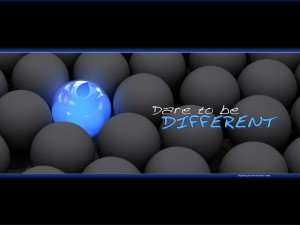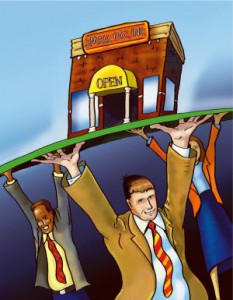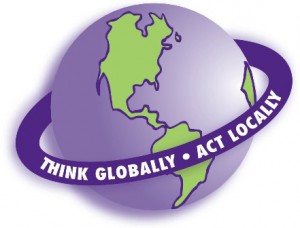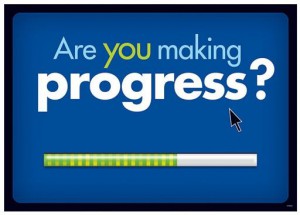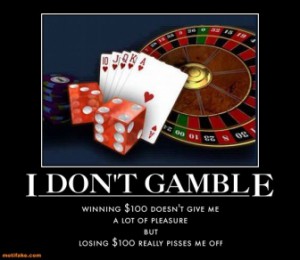Dealing with Innovation Blockers
Ever get excited about an idea and have it demolished, shot down, blown up, ridiculed, or just ignored? Here are a few of the innovation blocker personas you might find in your workplace, and a few ideas to get around, jump over, or jedi mind-trick them.
The Bureaucrat builds consistency, and sets limits to ensure rule adherence, but has gone a little overboard. This persona’s favorite quotes include “Has this been approved?”, “Fill out this form,” or “That’s not in this budget cycle.” Any organization that aspires to scalability and developing size beyond the fun start-up phase, requires a level of protocol and operational systems thinking, which necessarily means implementing processes and procedures. Everyone in such an organization can’t simply “wing it” on their own personal path to developing innovation. However, the Bureaucrat has gone too far.
Here are a few tips for working with the Bureacrat:
- Prepare before going to them. Write down what you believe you need and be as specific as possible. You won’t be able to anticipate all of the red tape and paperwork, but you can probably predict much of it. Compile all of the evidence and information you think you might need and have a paper trail to back up your efforts.
- Participate in the process. Don’t be content if they say they will get back to you. Ask what steps they need to go through and then request to participate in the process. Because you are the primary stakeholder, we may be able to chase down information faster.
- Check in. They might give you a vague answer like, “It takes between five and ten days.” Tell them you will check back in five days, then do it. Your punctuality will send a message you expect the same from them. To them, your persistence will elevate the importance of your project.
The Wimp Sponsor is a project champion who lacks attention, interest, or clout and whose favorite lines include “Can you rework the business plan on this?” and “Let’s study this some more.” Forever terrified of social risk, and losing political capital, your Wimp Sponsor is either unable or unwilling to champion your efforts. Consumed with cowardice, these impotent and ineffective sponsors need to be identified and addressed from both above and below.
- If you work for a Wimp: Take the initiative. You aren’t likely to get permission or have them ask you to take action. Remember they’re a wimp, so be proactive. Take the first few steps in your initiative and report on your progress. The Wimp isn’t likely to ask you to stop or retrace your steps. They just don’t have the courage to ask you to move forward because they don’t want to be responsible for your actions
- If you manage a Wimp: Create specific targets and deadlines together, but let them lead the way. Wimps often know their weakness, and it’s best to allow them to state out loud what they believe needs to be done. Ask them these simple three questions: “What are you trying to accomplish that requires more than just you? Who would be the best people to help? What stands in your way?” By answering those three questions out loud, you will help the Wimp build their own accountability and publicly take the first step in developing a successful project initiative.
The Power Monger believes power and resources are more important than results. The Power Monger has already achieved some level of power and status. Favorite quotes are “I’ve already thought of that,” “I’m already doing that in my group,” and “Hope you can do that with your own people.” The Power Monger operates from a viewpoint of scarcity. They believe there aren’t enough resources to go around and it’s important to hoard and protect assets and information.
- Start with praise. The Power Monger is likely to be sensitive to criticism and to reject new ideas. The first step is to use gracious, yet authentic, flattery. False flattery, although effective, propagates a dishonest work environment. Find areas of excellence in this power hungry person and give them honest and direct praise for it.
- Use the power of suggestion. There is a famous scene in Star Wars in which the young Luke Skywalker and his mentor Obi-wan Kenobi are at a guard check point in a land speeder. The Imperial stormtroopers are in search of droids that are with them, but Obi-wan uses a Jedi mind trick to make the stormtrooper in charge believe and say, “These aren’t the droids you’re looking for…. He can go about his business.” The power monger needs to feel as if the idea came from them. Instead of dictating or directing your ideas, pose them as questions.
Bureaucrats, Wimps, and Power Mongers are common foes to the innovation champion. But remember this before you go looking to ID these people. Start by assuming the best intentions of everyone around you. Whether meek, powerful or simply pushing paper around, when we first assume the best of people they will often rise to the occassion and reveal the best version of themselves. Expect the best and back it up with a good offensive strategy.


